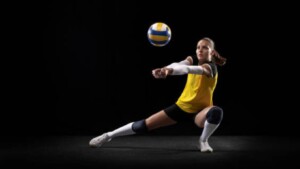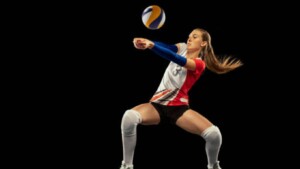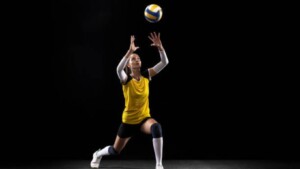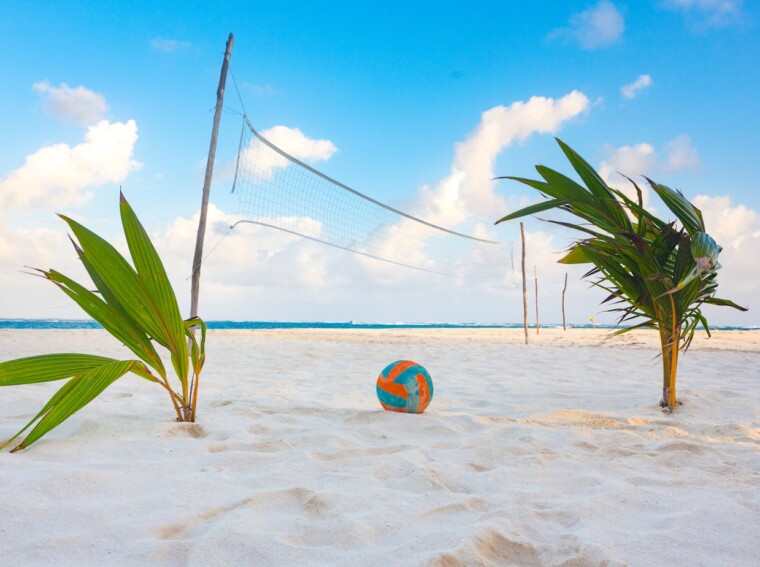Mastering the art of passing in volleyball isn’t just about power, it’s about precision. The position of your arms can make or break your game. In the world of volleyball, posisi lengan yang benar saat melakukan passing bawah bola voli adalah translates to ‘the correct arm position when doing a lower pass in volleyball’.
This technique is crucial for setting up attacks and maintaining control over the game. It’s not as simple as it sounds, though. The right arm position requires practice, understanding, and a keen sense of timing.
Posisi Lengan Yang Benar Saat Melakukan Passing Bawah Bola Voli Adalah
The critical role of arm positioning in lower pass execution cannot be overstated. This integral aspect of the technique directly impacts a player’s ability to accurately control the ball. But why is it so essential?
 Firstly, posisi lengan yang benar saat melakukan passing bawah bola voli adalah, it’s paramount to understand that the act of passing in volleyball is not solely relegated to power. The precision element, influenced significantly by correct arm positioning, drastically molds the trajectory of the pass. It’s the part of the player physically interacting with the ball, making it a pivotal influence on the end result.
Firstly, posisi lengan yang benar saat melakukan passing bawah bola voli adalah, it’s paramount to understand that the act of passing in volleyball is not solely relegated to power. The precision element, influenced significantly by correct arm positioning, drastically molds the trajectory of the pass. It’s the part of the player physically interacting with the ball, making it a pivotal influence on the end result.
Mastering correct arm position can amplify a player’s effectiveness in passing. There’s a direct linkage between the accuracy of a lower pass and the positioning of the player’s arms. The better positioned a player’s arms are, the more control they obtain over the ball. This control further allows players to add variations to their passes, bending the game in their favor.
Mechanics of the Lower Pass
In volleyball, mastering the mechanics of the lower pass is critical. It’s not just about getting the ball onto the opponent’s court, but doing it in a manner that creates opportunities for attacks. The actions of a player during a lower pass can have a profound effect on the subsequent activity.
A controlled, accurate lower pass results from a specific sequence of physical movements.
The Arm Position
 Positioning of the arms is the core element in a lower pass. The arms need to be straight and firm, but not rigid. They should come together to form a flat platform for the ball. Many players interlock their fingers to achieve this flat platform. However, others prefer to hold their hands side by side, emphasizing that the correct technique is one that feels comfortable and provides control.
Positioning of the arms is the core element in a lower pass. The arms need to be straight and firm, but not rigid. They should come together to form a flat platform for the ball. Many players interlock their fingers to achieve this flat platform. However, others prefer to hold their hands side by side, emphasizing that the correct technique is one that feels comfortable and provides control.
The Body Stance
Along with the arm position, a balanced body stance is crucial to control the trajectory of the ball. Players must be in a semi-squat stance with feet shoulder-width apart. This stance offers the appropriate balance and flexibility needed to adjust the aiming point of the pass.

The Ball Contact
The timing and point of contact with the ball play pivotal roles in the accuracy and control of the pass. The ball should ideally strike the forearms in the area between the elbow and the wrist. To maximize the power of the pass, the player should aim to make contact with the ball at the highest point possible, without breaking the straight line formed by the arms.
Lower Pass in Volleyball
Mastering the lower pass in volleyball isn’t just about skill, it’s about understanding the game’s fundamentals. It’s all about balance, foot positioning, straight arms, and keen eye tracking. These aren’t just techniques, they’re stepping stones to becoming a better player. Remember, it’s not about instant mastery but steady practice and repetition. It’s about preventing injuries and improving your skills one game at a time.
